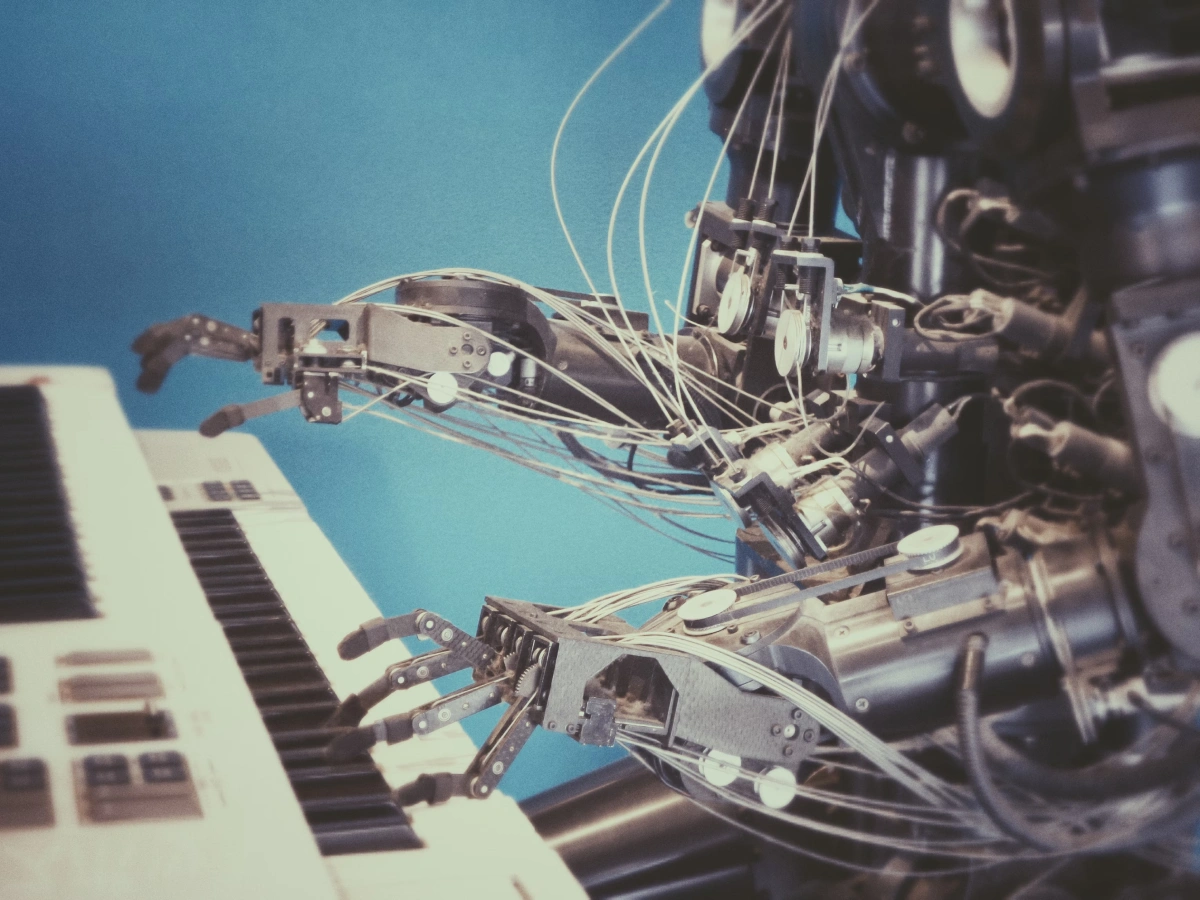How should we deal with AI in the future? With the Artificial Intelligence Act, the European Union is attempting for the first time to lay down rules for the use of artificial intelligence. For some, the regulation goes too far, while others criticize it as ineffective. It is undisputed that the EU AI Act will have a definite impact on all companies that use AI. This also applies to translations.
Things will get really exciting in summer 2026. The EU has been working on the regulation for around five years and it went into effect in August 2024. However, most of the provisions of the AI Act will not become binding until August 2, 2026. The world’s first comprehensive AI law on the use of artificial intelligence is expected to set a new benchmark.
Translations using AI are only indirectly affected by it. The term “translation” in connection with AI systems is only mentioned once in the 200 printed pages of the English version of the EU AI Act. And yet the implications of the regulation are also clear in this area.
A risk-based approach: What the EU AI Act is all about.
The regulation follows a risk-based approach: It classifies AI systems based on corresponding categories, whereby those with unacceptable risk are generally banned. The prohibited applications include social scoring, emotion recognition, influencing behavior, mass surveillance, or similar obviously unethical tools.
The regulation is not interested in the vast majority of “everyday” applications of artificial intelligence, which are predominantly classified as risk-free. Instead, the focus is on the particularly relevant high-risk AI systems, which are listed in Annex III of the text. The intriguing part is the category in between: These AI applications are and will remain permitted, but they are potentially fraught with risk. This area is also relevant for translations and translation service providers.
Do companies have to label AI-generated texts?
Transparency is a key concern of the authors of the regulation. The disclosure requirements in the AI Act are primarily targeting AI deepfakes. However, in Article 1, paragraph 134, the AI Act also mentions something relevant to translations: According to this paragraph, it is “appropriate to seek a similar disclosure requirement in relation to AI-generated or manipulated texts to the extent that they are published to inform the public about matters of public interest…”, followed by the essential qualification: “…unless the AI-generated content has been subject to a process of human review or editorial control and a natural or legal person has editorial responsibility for the publication of the content.”
What do companies need to know when they are using AI systems? There is no fundamental obligation for them to label texts translated exclusively by an AI system. However, in the interests of transparency and building trust, they should disclose it to the users. This is especially important when it comes to areas with particularly high quality requirements, such as legal or medical texts. Furthermore, proactive disclosure means that companies are ready for any future regulations.
In any case, it is advisable for companies to be on the safe side by asking human translators to check the AI-generated version and revise it as needed. In other words, they should at least use MTPE, the combination of machine translation and post-editing.
Liability: Where the risk lies when AI models cause damage
The question of the extent to which providers and operators should be liable for artificial intelligence errors is particularly controversial. Only one thing is actually clear in this context: You cannot sue an AI. Generally speaking, providers are liable within the scope of the original purpose of the system. Only users who misuse or modify the system are personally liable. In practice, of course, this only applies to a very limited extent when it comes to AI translations. All major translation systems make it clear in their general terms and conditions that they are only liable for the consequences of mistranslations in the event of their own intent or negligence.
For translations, these considerations are particularly relevant when it comes to sensitive areas such as legal contracts, financial reporting, general terms and conditions, medical texts and, under certain circumstances, instructions for use. Therefore, whenever there is a chance that a mistranslation can cause real damage, it is common practice to at least entrust the texts to professionals for post-editing or even to have them certified. Companies that blindly rely on artificial intelligence in these cases will find it difficult to hold the manufacturers of the AI harmless when push comes to shove.
Incomplete legal framework for AI?
The topic of liability is largely omitted from the AI Regulation itself. The regulation primarily addresses measures to prevent damage, but not what happens if it occurs. This is supposed to be regulated by another regulation: the AI Liability Directive.
This regulation did not address criminal prosecution, but was primarily intended to supplement the AI Act with a non-contractual and fault-based liability system under civil law. The goal was to lessen the burden of proof, facilitate the enforceability of claims, and improve victim protection. For example, courts were supposed to be able to refutably presume culpability if a court-ordered duty of disclosure had not been fulfilled.
In February 2025, however, the European Commission withdrew the proposal for the AI Liability Directive. At this point, it was clear that no agreement could be reached between the EU legislators and the member states, which is why the proposal could not be enforced. The failure of the project caused some anger and made it clear how many different interests need to be reconciled when it comes to regulations on artificial intelligence. Despite all the disappointment, it is to be expected that new attempts will be made to regulate liability issues. Therefore, it is definitely worth minimizing the corresponding risks.
Artificial intelligence and data protection
In addition to transparency, the AI Act is also focused on data protection. In a sense, the regulation complements the General Data Protection Regulation (GDPR), which may have served as a template. While the GDPR is more concerned with privacy, the AI Act also addresses issues relating to security and fundamental rights, such as protecting the environment or the rule of law.
Data protection is a particularly sensitive issue in connection with machine translation. It must meet two objectives: Personal data must be protected and internal company information (such as financial figures, patent applications, and similarly sensitive information) must not be inadvertently published.
The crux of machine translation: Most free AI systems utilize user input for teaching. And since the locations of the servers are usually not known, it is not really possible to check what ultimately happens to the information. Professional translation service providers such as ACT Translations use licensed versions for MTPE translations, which ensures that the software providers do not use the data to train their AI solutions. And it goes without saying that the client’s texts end up on trustworthy, secure servers in Europe.
Speaking of the GDPR: Since the AI Act went into effect, non-compliance with its provisions has resulted in similarly hefty penalties – in some cases, even higher. Violators face fines of up to 35 million euros or 7 percent of annual revenues.
Status 2025: Much remains in a state of flux, and trustworthy collaboration is becoming more important
The AI Act is certainly not the solution to all problems. This is hardly surprising when faced with attempting to regulate a technology that is constantly evolving – even the status quo of 2024 is no longer up to date. It will be interesting to see to what extent future regulations will keep pace with this development. For example, it is easy to see that more precise clarification of liability issues must and will take place at some point.
For companies that need translations, this is one of the main reasons to look for strong partners. Professional service providers are always up to date with the latest legal requirements and relieve their clients of the obligation to constantly worry about it.






